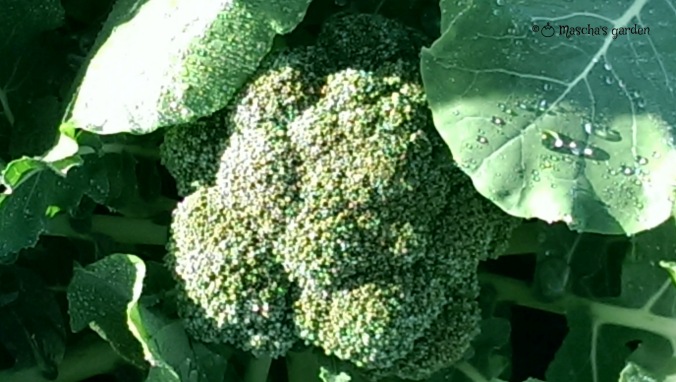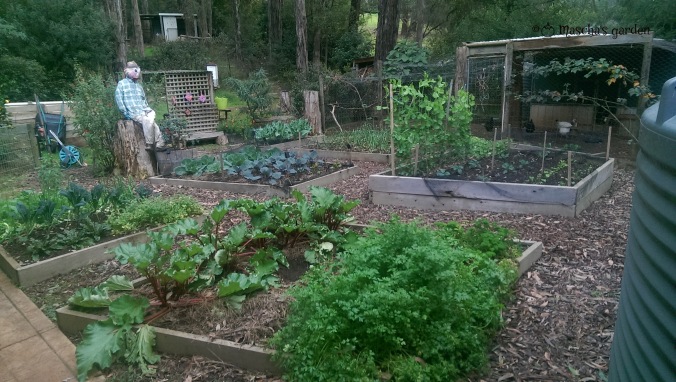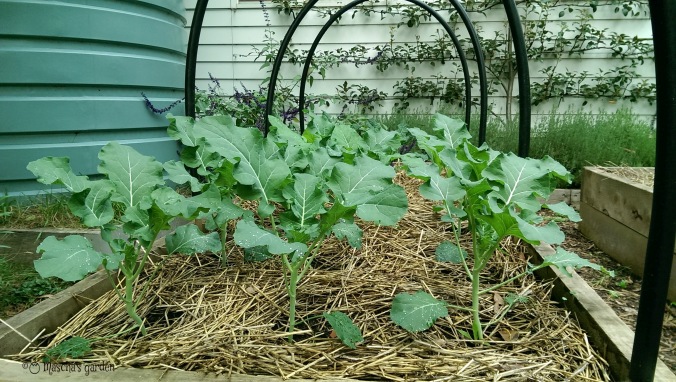
Broccoli and its fancier relatives (Brassica spp.) would have to be one of my favourite vegetables to grow, both for this nutritious vegetable’s many culinary uses and for its shear beauty. Most people are very familiar with the common supermarket variety of green broccoli, however less well known (and rarely available in supermarkets) are Broccoli Raab, Romanesco Broccoli and Sprouting Broccoli (with both green and purple varieties available).

Beautiful Romanesco broccoli with its spiralling patterns which are a natural representation of the Fibonacci sequence (one for all you math geeks!)
At home we eat broccoli several times a week and hence I try to grow it for most of the year. In our Melbourne climate this is possible if you plant seedlings every 4-6 weeks throughout spring, summer and autumn. Unless you have a greenhouse, seedlings planted in the cold of winter tend to struggle, so plant some extra throughout autumn to get them off to a flying start while there is still some warmth left in the soil. I avoid planting at the hight of summer too as seedlings often struggle with the high air temperatures. You may have some success planting into a garden bed shaded from the afternoon sun (by other plants or taller vegetables) at this time of the year.

The vegetable garden at the side of our house with many members of the Brassica family off to a good start before winter.
Broccoli and its relatives like a nutrient rich soil with plenty of compost and some organic fertiliser added and with a pH between 6.5 and 7 , to learn how to test your soil’s pH click the link- Testing the pH of your soil . You can sow seed in seedling punnets and transplant into your garden bed once your seedlings have their second set of true leaves (the first leaves to appear are seed leaves and look different to the true leaves). Plant your seedlings deeply (right up to the first true leaves) as plants can get top heavy and are prone to toppling over on windy sites. Most varieties of broccoli will need to be planted about 30cm apart however, sprouting and Romanesco broccoli, are large plants at maturity and may need to be planted 50cm apart.
During spring, summer and early autumn you can cover your broccoli plants with an insect exclusion tunnel (click this link to learn How to make an insect exclusion tunnel ) to protect them from the caterpillars of the cabbage white butterfly. Alternatively you can spray with Bt (Bacillus thuringiensis) sold under the name Dipel, which is a bacteria that acts as a stomach poison in caterpillars and is an allowable input in organic gardens. You will need to spray regularly though, wetting all leaf surfaces, as Bt washes off with rain and irrigation. Keep an eye out for aphids too, especially during warmer weather. They often appear if plants are stressed from lack of water or fed too much nitrogen, so make sure to water your broccoli regularly and don’t over fertilise. If aphids do appear you can spray with soap sprays or natural pyrethrum.

Once the weather is cold enough (usually in May in Melbourne) you can take your insect exclusion nets off as the cabbage white butterflies are gone and your broccoli will benefit from the extra light and air flow.
Broccoli can take about three months to grow (depending on the time of year), before it is ready to harvest. With broccoli that forms a main head, once you harvest, leave the plant in the ground as you will get a second harvest of smaller side shoots. Sprouting broccoli forms many small florets that can be harvested as needed but are best harvested before the florets open up. Any broccoli heads that aren’t harvested and that flower are not wasted as the yellow flowers are edible and make a great addition to salads and stir fries and the bees love them too!
